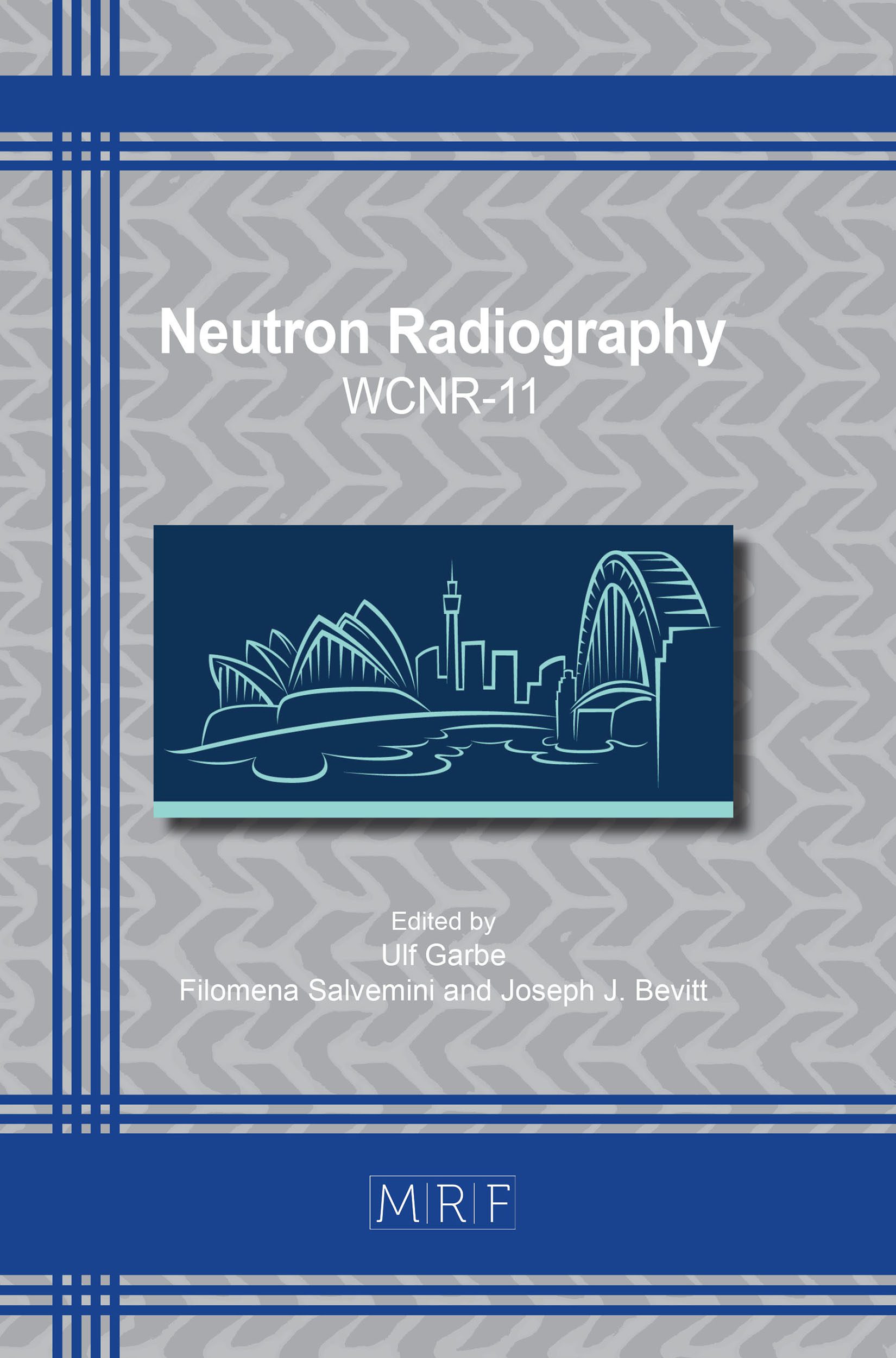Imaging Based Detector with Efficient Scintillators for Neutron Diffraction Measurements
Matt W. Seals, Stephen B. Puplampu, Dayakar Penumadu, Richard A. Riedel, Jeff R. Bunn, Christopher M. Fancher
download PDFAbstract. The Anger Camera developed by the detector group at the Oak Ridge National Laboratory was utilized for the present work for its unique advantage of employing multiple modules to obtain large active measurement area for detecting diffracted/scattered thermal neutrons. Considering the relatively small flux associated with diffracted/scattered neutrons, suitable efficiency with high spatial resolution is a requirement for utilizing two-dimensional imaging detectors. The potential to implement pulse shape (in addition to pulse height) discrimination-based scintillators further enhances the ability to detect diffracted neutrons with improved signal to noise ratio. In this paper, initial results associated with 6Li glass-based scintillator will be presented. The authors explored the feasibility of using this system to detect and quantify diffraction peaks and peak shifts at the Neutron Residual Stress Facility (NRSF2), High Flux Isotope Reactor (HFIR) in the Oak Ridge National Laboratory (ORNL). Suitable camera mounting and shielding had to be developed. Reference measurements using polycrystalline powders with known atomic planar spacing will be discussed along with measurement settings associated with expected resolution for peak shift measurements. Initial results are promising and demonstrate that a suitable scintillation-based neutron detecting system is viable for residual stress-based diffraction measurements. Small area detectors are also feasible with suitable consideration to scattering volume and distance to detector.
Keywords
Published online 1/5/2020, 6 pages
Copyright © 2020 by the author(s)
Published under license by Materials Research Forum LLC., Millersville PA, USA
Citation: Matt W. Seals, Stephen B. Puplampu, Dayakar Penumadu, Richard A. Riedel, Jeff R. Bunn, Christopher M. Fancher, Imaging Based Detector with Efficient Scintillators for Neutron Diffraction Measurements, Materials Research Proceedings, Vol. 15, pp 80-85, 2020
DOI: https://doi.org/10.21741/9781644900574-13
The article was published as article 13 of the book Neutron Radiography
![]() Content from this work may be used under the terms of the Creative Commons Attribution 3.0 licence. Any further distribution of this work must maintain attribution to the author(s) and the title of the work, journal citation and DOI.
Content from this work may be used under the terms of the Creative Commons Attribution 3.0 licence. Any further distribution of this work must maintain attribution to the author(s) and the title of the work, journal citation and DOI.
References
[1] R. A. Riedel, C. Donahue, T. Visscher, and C. Montcalm, “Design and performance of a large area neutron sensitive anger camera,” Nuclear Instruments and Methods in Physics Research Section A: Accelerators, Spectrometers, Detectors and Associated Equipment, vol. 794, pp. 224-233, 2015. https://doi.org/10.1016/j.nima.2015.05.026
[2] P. D. Olcott, J. A. Talcott, C. S. Levin, F. Habte, and A. M. K. Foudray, “Compact readout electronics for position sensitive photomultiplier tubes,” IEEE Transactions on Nuclear Science, vol. 52, no. 1, pp. 21-27, 2005. https://doi.org/10.1109/TNS.2004.843134
[3] S. Siegel, R. W. Silverman, S. Yiping, and S. R. Cherry, “Simple charge division readouts for imaging scintillator arrays using a multi-channel PMT,” IEEE Transactions on Nuclear Science, vol. 43, no. 3, pp. 1634-1641, 1996. https://doi.org/10.1109/23.507162
[4] L. M. Bollinger, G. E. Thomas, and R. G. Ginther, “Glass Scintillators for Neutron Detection,” Review of Scientific Instruments, vol. 30, no. 12, pp. 1135-1136, 1959. https://doi.org/10.1063/1.1716471
[5] J. M. Neill, D. Huffman, C. A. Preskitt, and J. C. Young, “Calibration and Use of a 5-Inch Diameter Lithium Glass Detector,” (in English), Nuclear Instruments & Methods, vol. 82, pp. 162-&, 1970. https://doi.org/10.1016/0029-554X(70)90343-5
[6] C. Coceva, “Pulse-shape discrimination with a glass scintillator,” Nuclear Instruments and Methods, vol. 21, pp. 93-96, 1963. https://doi.org/10.1016/0029-554X(63)90092-2































